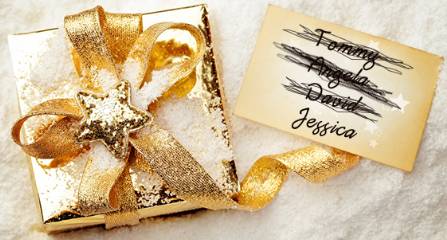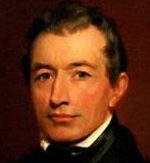National Ugly Christmas Sweater Day
Today is National Ugly Christmas Sweater Day, celebrated on the third Friday in December. Today we pay tribute to all the sweater-blind relatives who ever wielded knitting needles or visited a store, picked something up and said, “Oh my goodness, this is so cute! [Insert name here] will love this [flammable fabric] sweater with the [most hideous feature] on it!”
 The odds are good–especially if you’re a child of the 70s and 80s–that you’ve warehoused those ugly sweaters in the back of your closet for years out of misguided family loyalty and, of course, guilt. Now you could dig out those atrocities and donate them, knowing they would find a home, most likely on the back of a hipster whose facial hair is the subject of national discussion about its “relevance.” (Google the words hipster beard finished if you don’t believe us.)
The odds are good–especially if you’re a child of the 70s and 80s–that you’ve warehoused those ugly sweaters in the back of your closet for years out of misguided family loyalty and, of course, guilt. Now you could dig out those atrocities and donate them, knowing they would find a home, most likely on the back of a hipster whose facial hair is the subject of national discussion about its “relevance.” (Google the words hipster beard finished if you don’t believe us.)
If the idea of bearded men in skinny jeans doesn’t inspire you to part with your disasters of Christmas past, what we’re about to tell you may or may not help. Those sweaters that look like a wearable form of schizophrenia could end up being worn by teenage girls. The most irritating thing about this, if you’ve ever seen it, is that they look so good in them.
 When we were forced to wear them, the razzing we endured guaranteed at least one trip to cry hot, quiet tears in the girl’s bathroom. It was there that we hatched a plan to smuggle a second top in our backpacks and change before homeroom. We felt like criminal masterminds, right?
When we were forced to wear them, the razzing we endured guaranteed at least one trip to cry hot, quiet tears in the girl’s bathroom. It was there that we hatched a plan to smuggle a second top in our backpacks and change before homeroom. We felt like criminal masterminds, right?
Now those knitted prisons of cheer are in demand. “Tacky holiday sweaters have been a staple of our holiday selection at Savers for as long as grandmothers have knit them,” says Sara Gaugl, director of communications for Savers, a nationwide secondhand store chain, “but they shifted from being tacky to trendy in the last decade.”
We have it on good authority—our own—that the way to heal the emotional scarring caused by these experiences is deceptively simple: embrace the ugliness. You will be able to wear the tackiest sweater in the history of history if you follow these simple steps:
- If you have an ugly Christmas sweater in your closet, something even the moths won’t touch, drag it out of there and put it on. Let the shudder pass through you and take a deep cleansing breath. Now, look in the mirror for a few seconds. Work up to one minute. Breathe into a paper bag if needed. Observe the panic. Make it your friend.
- If you’ve already jettisoned your ugly sweaters, we applaud your triumph. But now, you must buy a new one, preferably at a thrift store. Be sure to bring a hankie to cover your nose if the smell of decades-old, infrequently washed acrylic, polyester and wool becomes overwhelming. You can do this.
- If you need to put an own artisanal spin on it to make it your own, have become intoxicated with the heady wafts of camphor floating up from your purchase, or are simply seized by the holiday spirit, check out this video on the Savers website with instructions for a DIY ugly Christmas sweater. Remember, do not make it look good or you will be branded both lame and vain.
If you still need a little more exposure therapy to quell your anxiety, watch one or all of the following movies: Step Brothers, The Santa Clause (all 3), Deck the Halls, National Lampoon’s Christmas Vacation, or Dumb and Dumber, in which Lloyd Christmas (Jim Carrey) has an entire ugly Christmas sweater-filled dream sequence.
You’re ready. Here’s the acid test. Leave your house wearing the sweater. Go for a walk in a populated area. (Thought you could sneak that by us, eh?) Go to the grocery store. Wear it to your office Christmas party. Go all out and host an ugly Christmas sweater party.
If you’re out and about and the realization that you’re too old/smart/unironic to be wearing deliberately ugly clothing, fear not. You know that rictus grin you made when you opened a gift and a crime against humanity with two sleeves and a neck hole looked back? Slap that on your face and no one will be the wiser.
Happy National Ugly Christmas Sweater Day!
![]()


 Today is the National Day of the Horse. On November 18, 2004, the U.S. Senate unanimously passed
Today is the National Day of the Horse. On November 18, 2004, the U.S. Senate unanimously passed  Today is Poinsettia Day, which marks the death of Joel Roberts Poinsett on December 12, 1851. Poinsett was
Today is Poinsettia Day, which marks the death of Joel Roberts Poinsett on December 12, 1851. Poinsett was 